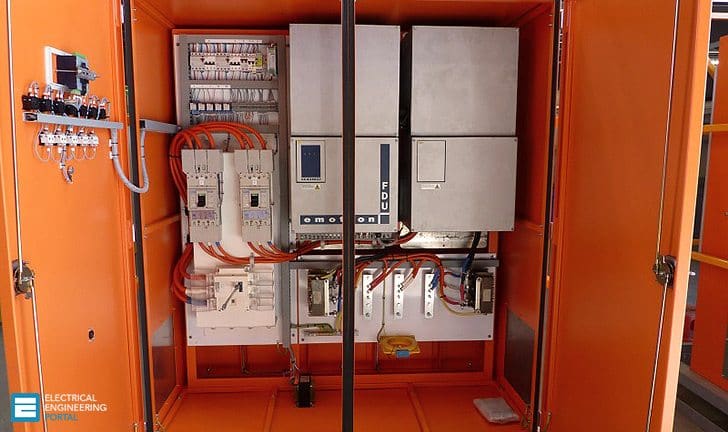
Variable speed drives (VSDs)
VSDs (Variable Speed Drives) offer several benefits, some of which are relatively easy to quantify, and others of which are less tangible, but there are some potential drawbacks, which must be avoided.
Benefits we get from VSDs
1. Energy Savings
With rotodynamic pump installations, savings of between 30% and 70% have been achieved in many installations by installing VSDs. Where PD pumps are used, energy consumption tends to be directly proportional to the volume pumped and savings are readily quantified.
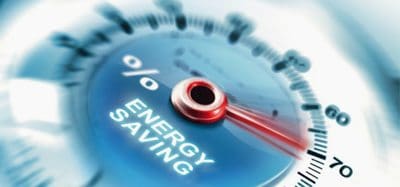
2. Improved Process Control
By matching pump output flow or pressure directly to the process requirements, small variations can be corrected more rapidly by a VSD than by other control forms, which improves process performance.
There is less likelihood of flow or pressure surges when the control device provides rates of change, which are virtually infinitely variable.
3. Improved System Reliability
Any reduction in speed achieved by using a VSD has major benefits in reducing pump wear, particularly in bearings and seals. Furthermore, by using reliability indices, the additional time periods between maintenance or breakdowns can be accurately computed.
Potential Drawbacks of VSDs
VSDs also have some potential drawbacks, which can be avoided with appropriate design and application.
1. Structural Resonance
Resonance conditions can cause excessive vibration levels, which in turn are potentially harmful to equipment and environment.
Fixed-speed applications often miss these potential resonance situations because the common excitation harmonics due to running speed, vane passing frequency, plunger frequency, etc., do not coincide with the structural natural frequencies.
For VSD applications, the excitation frequencies become variable and the likelihood of encountering a resonance condition within the continuous operating speed range is greatly increased. Pump vibration problems typically occur with bearing housings and the support structure (baseplate for horizontal applications, motor and stool for vertical applications).
Pressure pulsations are the common excitation mechanism. These pressure pulsations may be further amplified by acoustic resonance within the pump or the adjacent piping.
- Simple hydraulic resonance calculations
- Passing frequency analysis
- Structural resonance, for example, utilizing Finite Element Analysis
- Modal testing of the actual machine.
2. Rotor Dynamics
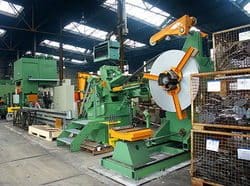
The risk of the rotating element encountering a lateral critical speed increases with the application of a VSD. Lateral critical speeds occur when running speed excitation coincides with one of the rotor’s lateral natural frequencies.
The resulting rotor vibration may be acceptable or excessive, depending on the modal damping associated with the corresponding mode. Additionally, drive-induced torque harmonics may cause resonance conditions with torsional rotor dynamic modes. However, such conditions are usually correctible or preventable.
Variable speed vertical pumps are more likely than horizontal machines to exhibit operational zones of excessive vibration. This is because such pumps’ lower natural frequencies are more likely to coincide with running speed. Small, vertical close-coupled and multistage pumps normally do not present this type of problem.
3. Additional Considerations for VFDs
The introduction of VFDs requires additional design and application considerations.
VFDs can be fitted to most existing motors in Europe and other areas, which use a 400 Volt (V) network. However, this is generally not the case in the United States, and other areas where network voltages exceed 440 V. Hence, reinforced insulation “inverter duty” motors are often needed.
The high rate of switching in the PWM waveform can occasionally lead to problems.
- The rate of the wavefront rise can cause electromagnetic disturbances, requiring adequate electrical screening (screened output cables). Filters in the inverter output can eliminate this problem.
- Older motor insulation systems may deteriorate more rapidly due to the rapid rate of voltage change. Again, filters will eliminate this problem.
- Long cable runs can cause “transmission line” effects, and cause raised voltages at the motor terminals.
Voltages can be induced in the shafts of larger motors, potentially leading to circulating currents, which can destroy bearings.
The following corrective measures are required:
- Insulated non-drive-end bearings are recommended on all motors over 100 kilowatt (kW) output rating.
- Common mode filters may additionally be required for higher powers and voltages.
The converter will have losses, and ventilation requirements for the electronics can be an important issue. The life expectancy of the converter is generally directly related to the temperature of the internal components, especially capacitors. The converter may require installation in a less onerous environment than the motor control gear it replaces.
Specifically:
- Electronics are less able to cope with corrosive and damp locations than conventional starters.
- Operating a VFD in a potentially explosive atmosphere is not usually possible.
How Variable Frequency Drives Save Energy (VIDEO)
Resource: Variable Speed Pumping – A Guide To Successful Applications








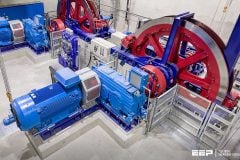
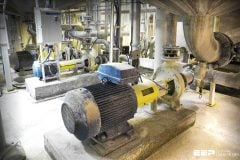

WANT TO KNOW ABOUT TESTING AND COMMISSIONING OF VSD